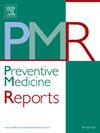Preventing and addressing youth vaping in British Columbia, Canada: Evidence from triangulation of a scoping review of vaping policy and qualitative interviews with school-aged youth
IF 2.4
3区 医学
Q2 PUBLIC, ENVIRONMENTAL & OCCUPATIONAL HEALTH
引用次数: 0
Abstract
Objectives
Vaping remains a widespread and ongoing epidemic among youth, with research demonstrating that well-designed policies can play a critical role in curbing this growing issue.
Methods
The present study provides a Canadian case-study examination of vaping policy by triangulating a scoping review of federal (Canada, n = 3), provincial (British Columbia, n = 4), and regional (Okanagan, n = 26) policies (N = 33) from 2000 to 2024 with qualitative interviews with secondary school students aged 12 to 18 (N = 25). The scoping review, conducted in 2020 and updated in 2024, followed the Arksey and O'Malley framework and incorporated guidelines from PRISMA to ensure comprehensive identification of relevant policies across government, health, and educational domains. The interviews, conducted in 2020 and 2021 in the Okanagan region of British Columbia, were analyzed using NVivo software through conventional content analysis, an inductive approach where two coders collaboratively identified categories and sub-categories from participant responses using a finalized codebook.
Results
The policy review identified gaps in comprehensiveness, public accessibility, and enforcement, particularly at regional levels, where policies often lack comprehensiveness and fail to address vaping-specific challenges. Interview findings revealed youth perceptions of school policies as poorly implemented, reactive, and overly punitive, highlighting the need for proactive, educational approaches to address vaping behaviors.
Conclusions
Findings emphasize the importance of clear, accessible, and targeted policies that address possession, distribution, and marketing while involving youth, educators, and parents in awareness and prevention efforts. This case study provides insights applicable to other jurisdictions, offering a framework for designing dynamic, equitable, and effective vaping policies internationally.
求助全文
约1分钟内获得全文
求助全文
来源期刊

Preventive Medicine Reports
Medicine-Public Health, Environmental and Occupational Health
CiteScore
3.90
自引率
0.00%
发文量
353
 求助内容:
求助内容: 应助结果提醒方式:
应助结果提醒方式:


